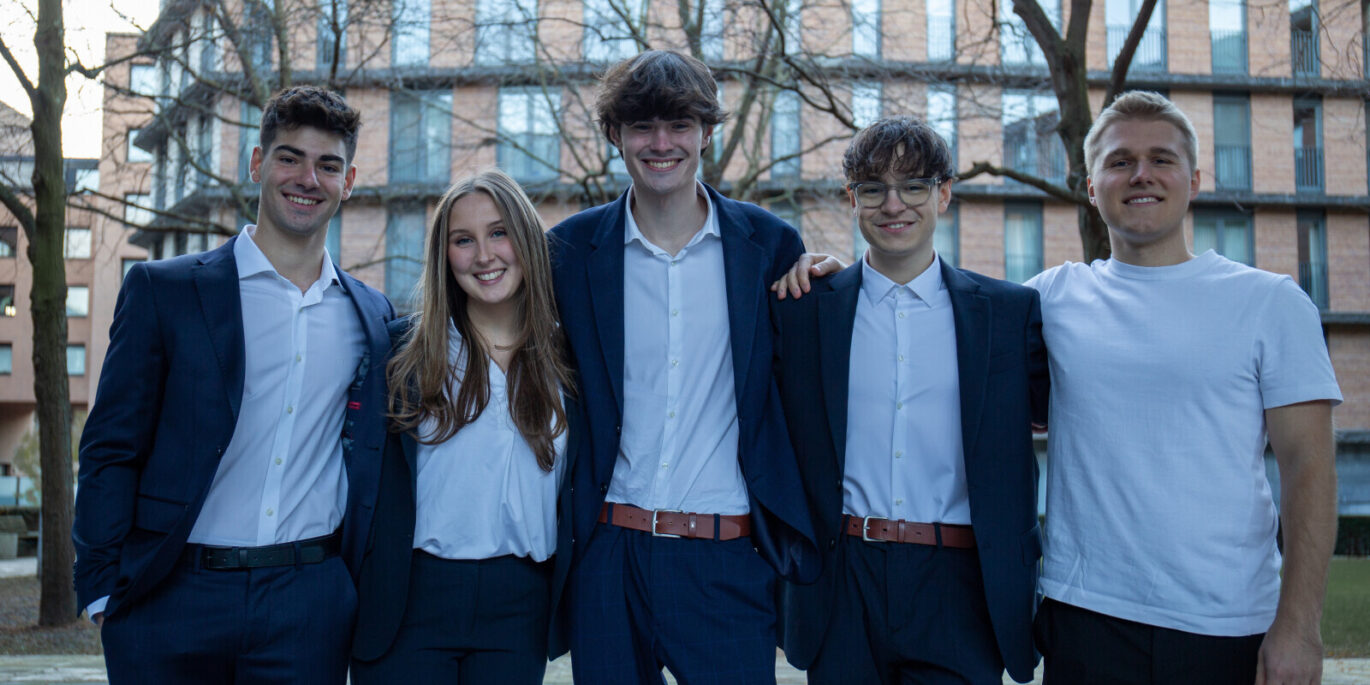SUs have a long history of providing spaces for democratic debate – and so it’s no surprise that 87 per cent of SUs still use a democratic model that “has been around for decades”.
In his research, Nick Smith argues that the “classic” student representative council can still tick a lot of boxes – when they work, they can capture a breadth of views, resolve conflict, educate students, direct and hold student leaders to account, and can be seen as “democratic”.
But it seems to us that there are a number of significant issues with this model – issues that we’ve been discussing at Royal Holloway in some depth as part of our own systemic review of our democracy over the past 12 months.
Those that know us well will know that for one of us, this topic is somewhat of a hobby horse. But we promise to keep this piece jargon-free. Our work has concluded that the classic model of a student council falls victim to three key challenges that cannot be overcome by simple tweaks. The challenges fundamentally undermine the purpose of the body – to collectively determine what is in the interests of students on a particular topic. Here we outline these three challenges briefly, before pointing to the direction of travel we’ve pursued at Royal Holloway.
Complexity
Students have always lived complicated lives, with different issues that can be addressed in numerous different ways. The classic student council model requires participants to be both experts in problems, and experts in solutions – and to expertly match one set with another.
But there is no requirement in this model to ensure individuals participating in them are educated or informed – and indeed, because of this, it is very rare for SUs to provide this type of resource behind them. Over a simple issue – whether to install microwaves in the café – this probably isn’t too much of a problem. But what about the complex question of what priorities the Union should adopt as it develops a lobbying strategy for improved careers and employability support? Or what position it takes over the university’s capital investment strategy on campus?
These types of issue require democratic legitimacy from the membership beyond a handful of full time student officers. But they also require significant time, commitment and most of all knowledge to delve into the key question of “student interest” over “student voice”. The classic model of student council offers no real answer to this challenge.
Compromise
The second challenge is more endemic. The classic model of a student council is built on the notion that Socratic debate will win out, with decisions almost always framed as a yes or no question – even those which enable amendments to be proposed. The end goal is almost always a wonderful vote, after which point any individual who finds themself in the wrong side of a given threshold completely respects the outcome and is entirely happy with the decision…. which never happens.
By building a decision-making group on the basis of contestation, the requirement for compromise is completely lost. A “winner takes all” mentality leaves the group with no strategic incentive to consider alternative solutions, make compromises, or ask the question “what else could the answer be”?
In a large piece of research conducted amongst 3,000 NUS Extra cardholders (and replicated exactly at Royal Holloway), the overwhelmingly preferred method for collective decision-making was for students’ unions to “negotiate mutual agreement amongst students using consensus” wherever possible. The classic model of a student council is simply not built for this.
Deliberative democratic theory, which is often cited by those looking to advance this argument, identifies particular features that must be present to deliver this. This includes things like the use of an independent facilitator (over that of a Chair), a requirement for communication to be genuinely interactive (rather than overly constrained by formal rules), and that all arguments should be supported by reasons, evidence and made in terms of “the public good” – none of which is required by the competitive model that student councils are based on.
Taken together, these first two challenges have often been alluded to by those interested in the “jury model” that Nick discusses – and indeed, these can and have been successful in helping students’ unions respond to these two challenges.
One size (doesn’t) fit all
But of course, there are clearly areas where the classic model of a student council does work, and where the deliberative jury approach falls short – the best example of which is almost certainly where they are required to perform an accountability role. But it is also the case that at times, issues are intractable – and some form of competitive or aggregative mechanism is needed to make a collective decision. Which leads nicely to the last challenge.
If you ever watched the TV show The West Wing, you’ll know of the scene in season four where President Bartlet has just wiped the floor with his republican opponent in the only televised debate for his re-election. Mirroring a theme running throughout the campaign, his Press Secretary CJ Cregg (whilst on a rather smug victory lap of the spin room, it should be noted), utters the phrase “the President just reminded us that complexity isn’t a vice”.
As gratifying as it might be to communicate an SU’s democracy in one beautifully designed infographic – most students’ unions are simply too complex for this to be good democracy. How students collectively decide what’s in their interests to sell in the shop is quite obviously different to the best way to decide what position to take on higher education policy, or how to hold elected officers accountable. Or indeed the methods that help students become informed on national political issues, helping them discover their values and ultimately develop skills to change the world around them. All of this is why at Royal Holloway, our democratic review actually led to a more complex, albeit more coherent, structure. Different types of decisions that students make are now made in different types of ways, by different people, at different times. But that’s totally fine.
What’s next
These three challenges all point in one direction. We all know that SUs need to engage with research and literature on democratic theory. But we need to do this at the very forefront of the debate. Deliberative democracy is currently going through its third iteration, where a “system” lens is being applied to the question of “what makes a good democracy”. We’ve taken this exact approach, recognising that we need to view our democracy as the sum of lots of different collective decision-making mechanisms – and it’s already bearing fruit.



















